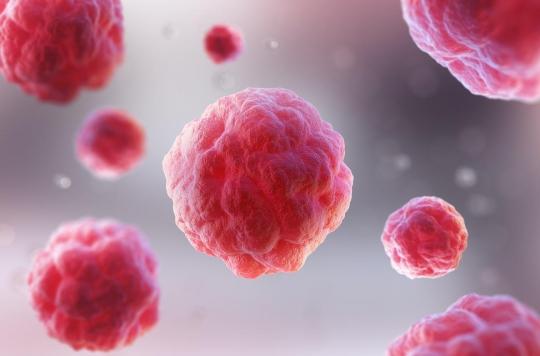French researchers have recently discovered a new therapeutic solution to treat patients with rare and orphan Olmsted disease. They succeeded in curing them of their symptoms by prescribing a drug generally used to treat certain cancers.

Olmsted syndrome is a rare disease, and even “a rare disease in rare diseases”, specifies Christine Bodemer, head of the dermatology department at the Necker Hospital and main author of the study, since it has a prevalence of one in a million. It is also an orphan disease because there is no treatment that can cure it permanently. It is linked to mutations in the TRPV3 gene which cause palmoplantar keratoderma, that is to say an impressive thickening of the skin of the palms and soles, which is extremely painful. The results of the study have been published in the journal JAMA Dermatology.
Diving into the existing literature
Patients with Olmsted syndrome found themselves in a therapeutic impasse to cure their symptoms, due to the failure of conventional treatments. “We had three patients from two different families, with on one side two brothers aged 15 and 17, and on the other, a 13-year-old little girl, whom I have been following since they were little.explains Christine Bodemer. Over time, their hyperkeratosis and pain kept increasing”. The only way for them to calm the pain is cold since the heat triggers a very significant burning sensation. “They spent their time with their feet in freezing water or in the snow in winter, which damages the skin and causes maceration and infections”. In addition to this, such a disease leads to stunted growth, anorexia, insomnia and a situation of total social isolation associated with a deep state of anxiety due to pain and disability.
A new therapeutic avenue has been opened up by Professor Christine Bodemer and her team, made up of Céline Greco, from the pain and palliative care service at Necker Hospital, and Claude Boucheix, from Inserm. Thanks to the repositioning of a drug. “The reflection was to say to oneself that conventional treatments do not work, that in research there is nothing either and that we must act immediately because these children run into an unbearable wall”, she recalls. It was then that, with her colleagues, the researcher began to dissect and review all the knowledge and literature on the TRPV3 gene, even if it had nothing to do with Olmsted’s disease.
Spectacular results
This research has made it possible to determine the causes of the symptoms which can lead to imagining a means of acting on them. In concrete terms, the key to this research lies in the link between the signaling modes of the TRVP3 and EGFR genes.
In the cell, the molecules EGFR and TRVP3 create “a kind of operating loop in the cell”, specifies Christine Bodemer. The EGFR molecule transactivates, ie it activates on its own, under the impulse of the TRPV3 molecule. The latter is in turn transactivated, dragging with it the EGFR, thus creating this infernal loop. The mutation that occurs in patients with Olmsted’s disease acts as an activator of the TRPV3 molecule, leading to a permanent transactivation of EGFR which maintains an even greater stimulation of TRPV3.
The researchers turned to other diseases to obtain a drug that could act on the EGFR in order to reduce this transactivation. “We looked at drugs to treat cancers in which EGFR is overexpressed, such as lung cancer or solid organ cancers, and we found erlotinib that works as an EGFR inhibitor.”. After taking the necessary precautions and obtaining the necessary authorizations, the researchers began to prescribe the drugs to the patients.
The results of this new treatment have been spectacular. “After one month, the patients hardly felt any more pain, and after three months, the palmoplantar keratoderma completely disappeared and we no longer needed to prescribe analgesics to soothe the pain”, welcomes the professor. Patients were able to eat, resume growth, begin puberty and return to school, all without side effects. They were cured of the symptoms of the disease. “We brought them back to life”concludes Christine Bodemer who hopes to obtain new therapeutic ideas thanks to this research technique.
.















